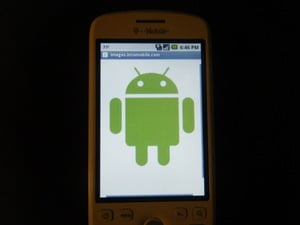With new mobile platforms like Google’s Android, Apple’s iPhone OS and Palm’s WebOS comes great opportunity for large software companies and small-time programmers alike. The three companies have made great strides to open up their ecosystems to as many developers as possible. In the past mobile developers needed to have a strong backing from a software company to get their work on a cell phone. But now, almost anyone with the initiative can have an app in a market nearly as fast as they can code it.
Getting Started with Android Programming – Download and Install the Eclipse IDE
While it is possible to write an Android app without an IDE (integrated development environment), it’s much easier to code with one. The Eclipse IDE is a great IDE that has compatibility with the Android SDK (software development kit). To get Eclipse, visit their website at Eclipse.org and go to the “downloads” section. From there you can select the version for your operating system (Windows, Mac OS, or Linux). There are also different versions of Eclipse, but I used the first one on the page called “Eclipse IDE for Java EE Developers”.
Getting Started with Android Programming – Download and Install the Android SDK and ADT
Google provides an Android SDK and ADT (Android Development Tools) to ease the development of applications in Eclipse. You can download the SDK on the Android Developers website. Once again, choose the version for your operating system. To install the Android ADT, simply open Eclipse and click on “Help” and “Install New Software” at the top. Next, an “Available Software” dialog will pop up. Click “Add” then enter “Android Plugin” in the “Name” box. In the “Location” box, enter “https://dl-ssl.google.com/android/eclipse” (without quotes). Click “Ok”. This will take you back to the “Available Software” window. Click the checkbox next to “Developer Tools” and click “Next”. This will show you the plugin that will be installed. Now click “Next” and agree to any licenses that come up. After that, click “Finish” and restart Eclipse.
Now you will show the ADT plugin where your Android SDK is located. In Eclipse, Click on “Window” then “Preferences” at the top. Click on “Android” on the left side of the window that pops up. Next to the “SDK location” box, click on “Browse” and locate the SDK folder that you downloaded. Make sure the SDK folder is extracted since it comes as a compressed archive.
Getting Started with Android Programming – Application ideas
Now comes the hardest part: coming up with a good idea for your Android app. I would recommend looking in the Android Market to see what has been done already. It would probably result in higher success if you develop an app that hasn’t been written yet. However, if you find an app that fulfills a need and you have ideas on improving it, then you could write a similar (but better) app.
Getting Started with Android Programming – Coding the App
Next, you have to write the programming code and UI code for you Android app. If you are familiar with Java, the programming language, this part should be a breeze. However, if you are like I was when I started, you might need to read up on Java. Sun has a great Java tutorial located here: The Java Tutorials. Also, if you run into a problem with Android-specific aspects of your app you can check out Google’s Android guide, which is here: Dev Guide.
Getting Started with Android Programming – Getting your App to End Users
When you have done all the hard work of creating your Android app you probably will want others to enjoy it. You can sign up with Google to provide your app in the Android Market. Simply go to the sign up site, located here: Android Market Publishing, and enter your information. The current cost is $25 to join the Market, but after you pay you can distribute all the apps you want under your account.
All in all, becoming an Android developer is not too difficult. With any luck, your app could be a big hit and make you $13,000 a month (“Car Locator Android App Makes $13,000 a Month”)! So come back and let us know how your experience goes. Or if you are a seasoned Android developer, hit us up in the comments below with any tips you might have for the greenhorns.
